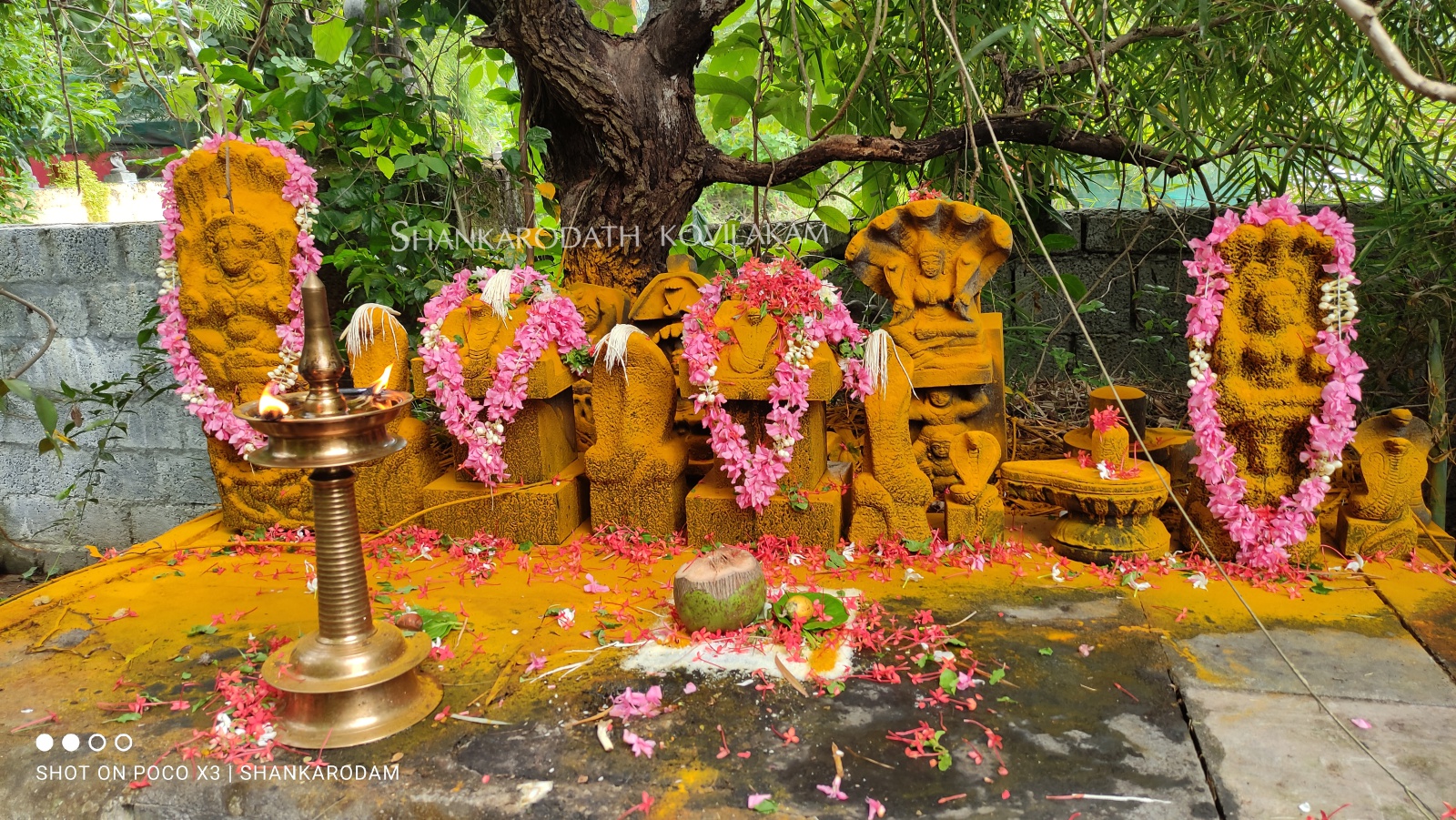Kaalasarpakavu
This is in front of Vishwanagayakshi Temple facing eastwards. The serpents residing in this Kavu have the aspect of Rahu and Ketu. Devotees to pay obeisance before proceeding further.


Krishnasarpakavu
This is in front of Vishwanagayakshi Temple facing westwards. This is the residing place of the Vaishya serpents and it is locally known as Karinagakavu.
Brahmanasarpakavu
The Brahmin serpents reside in the southern courtyard of the kovilakam. This Kavu is also known as Vadakekav, Maninagakav. (Seshanagam is the main deity here and after walking to the southwards, one should pay obeisance to Rakshass too).


Shivakavu / Ayilyamkavu
It is a cave inhabited by shudra serpents. There are two forts here; the fort for Sundarayakshi and Jalayakshi facing westwards and Gandharvakota facing eastwards. With the putts, the vines and the trees, there is an atmosphere reminiscent of the old grandmother's stories.
Yakshikavu
The traditional upasanamurti of the family is Kudumba Yakshi (Guardian deity of the family tradition)

Agamasarpakavu
This is also known as Padinjare Kavu and is the residing place for Kshatriya serpents. It is named as Agamasarpakavu because it invokes, invigorates, and pacifies the Sarpamsha miseries of the devotees. It is a dark cave surrounded by many ancient stone-cut paintings and trees. It also has a pond called Nagatirtha.